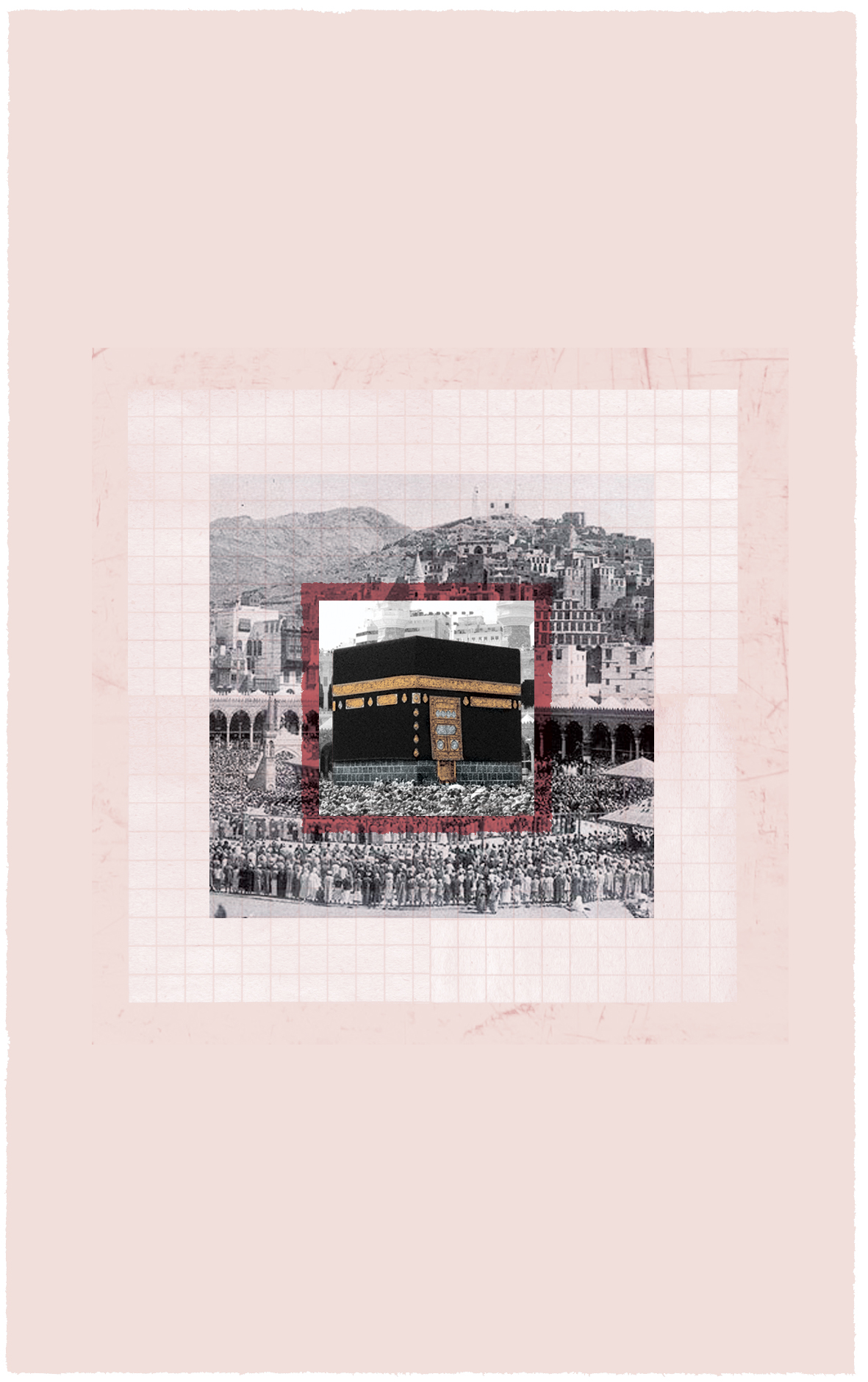Square Roots
Zayed School for Girls student Mishbah Patel reveals her powerful connection to the Black Stone at Mecca, a place she has never visited, but one that forms a core part of her identity.
Some days, you look at the simplest of things, and it reminds you of a home you know not of; but you feel it deep inside, the yearning for the land heard about through countless memories retold. A land at the heart of which lies a gem worth far more than the childlike dream of 1000 juice boxes.
Sometimes, when I look at a square, I do not think of the countless cuboids laying flat in my maths book, nor the lone Rubik’s cube left unfinished at the back of my wardrobe. Some days, I imagine the square as 3D. As a physical object hosting layers upon layers, and dozens upon dozens of red bricks. Simplicity is its definition. No meticulous arches, expensive stained glass, or any sign of voluptuously high pillars. Just a plain old cuboid draped in kiswah (pure silk cloth), made heavy by its intricately woven strands of solid gold.
Then I look again and see not the gold-trimmed embroidered Arabic, remade annually and hand-stitched during 10 months of hard labour. I do not see the surrounding buildings, wrought high through the evolution of modern architecture; acting as a fierce shield against which the harsh winds of the modern world dare not approach. Nor do I imagine anything other than what is in front of me. I look beyond all of this and open my eyes to what is really there. Deeply embedded in these threads, I trace back my lineage through these delicate strands of knowledge, life and hope, and find it; I find my roots in plain sight for all the world to see in this one square block.
Many say it traces back to the time of Ibrahim; however, what matters most is that, throughout history, this monument’s sole purpose has remained intact. Made by the bare hands of the Prophet Ibrahim, and his son, Ismail, this sacred place has been a sanctuary since pre-Islamic times. The Black Stone is said to be the only remnant of the original structure, which is located at the eastern corner of the Ka’aba. Here, in the holy city of Mecca, they gather in the millions, at the House of God, in reverence and with a mutual desire to cleanse the soul and renew their faith.
History has rooted itself in this one spot; without it, anyone with eyes could see that it was just a square brick establishment with no significance whatsoever. But then, we wonder, how is this monument any different from the other shrines of worship? This is the House of God, the same place Muslims direct their five-times-daily prayers. This is the same place the Prophet Muhammad (peace be upon him) walked in the footsteps of the Prophet Abraham, setting the scene for generations of Muslims to do the same for themselves. This is the fulfilment of the prayers of Abraham and his son, Ishmael, as they raised the bricks bit by bit, all the while supplicating to God: “Our Lord! Accept (this service) from us. Indeed! You are the All-Hearer, the All-Knower.”
You ask, what’s so special about this square block? Its roots. It is special because of the deep, compounded nature of its history and the unique type of faith in the actions performed around it. It’s considered the taonga of humanity. I long for just a small glimpse of the experience said to be like no other. I long to see the looming infrastructures, though very industrialised, for they are a sign I am near to the House of God. My sehnsucht (insatiable longing) for this small square cannot be compared to others, for when it comes to worship, we are all so very greedy. So, when I close my eyes, so simple, yet so loud, I can almost hear the words:
Labbayk Allahumma labbayk
(Here are I am, O Lord, here I am).
At the heart of the Earth, I imagine the surrounding Thassos marble trembling at the spiritual invocations of praise and gratitude. I imagine the countless women and men alike, circumambulating the Ka’aba, separated by their race and culture but brought together through faith. These words – no, this calling – invokes a feeling, a spark of something not quite reachable. Just yet, that is. The silent home to 2 billion Muslims worldwide, made for them, and them alone.
I will reach this place one day, spiritually sound, or no matter the mood or occasion. Because I know that, with one step into that small slice of paradise, I will truly feel content. Only then will I take a deep breath and whisper: I’m home.

This essay won the Secondary School category of the 2020 Warren Trust Awards for Architectural Writing. It is included in 10 Stories About Architecture 6, which is available from our shop.



